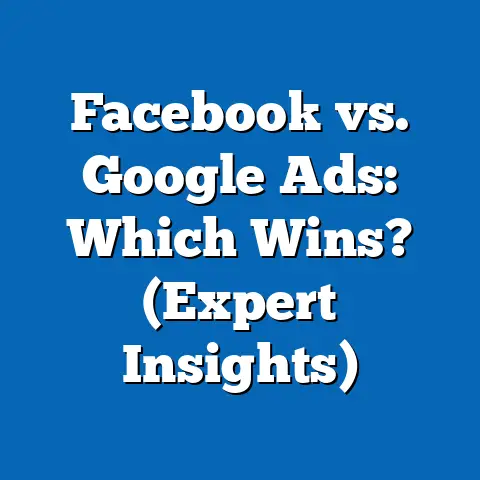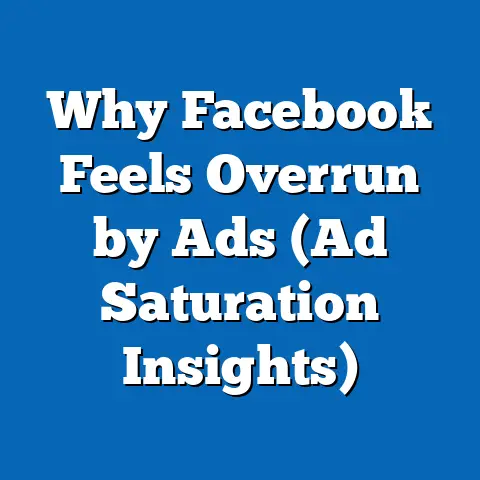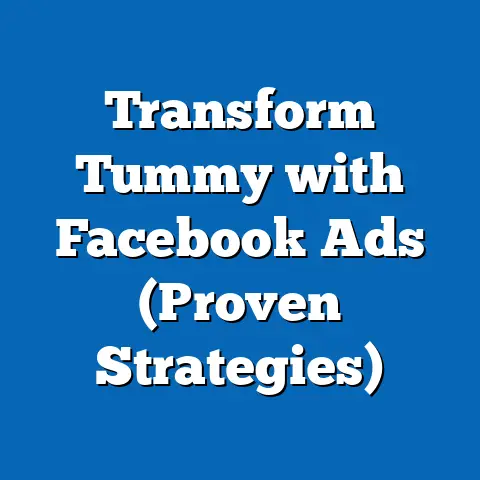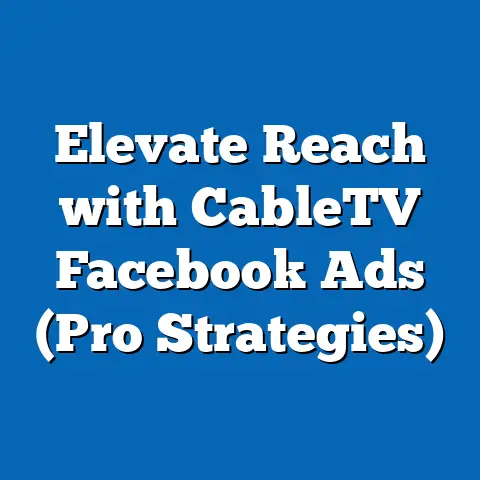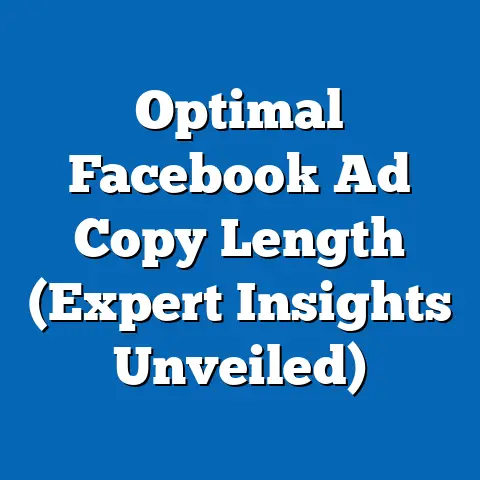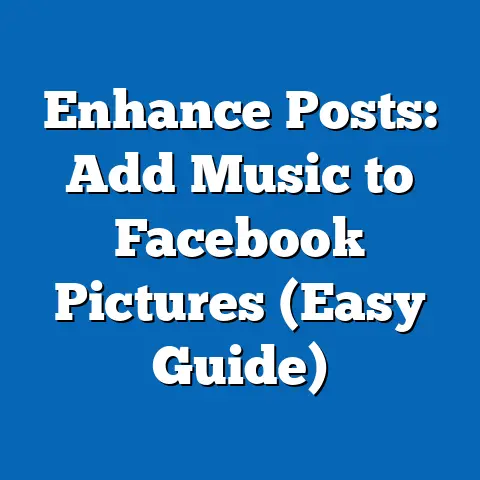Unlocking Competitor fb ad Secrets (Expert Insight Revealed)
The digital marketing arena is a battlefield. Each day, businesses across the globe wage war for attention, engagement, and ultimately, conversions. Facebook, with its billions of users, is a prime battleground. But in this crowded space, simply having a Facebook ad isn’t enough. You need to be strategic, informed, and, dare I say, a little bit sneaky. You need to understand what your competitors are doing.
I’ve spent years navigating the ever-shifting sands of Facebook advertising, and I can tell you firsthand: ignoring your competition is like going to war blindfolded. You might get lucky, but you’re far more likely to stumble and fall.
Think of it this way: your competitors are essentially running free A/B tests for you. They’re experimenting with different ad creatives, targeting options, and messaging strategies. By observing their successes and failures, you can shortcut your own learning curve and avoid costly mistakes.
But it’s not just about copying what works. It’s about understanding why it works, and then innovating to create something even better, something that truly resonates with your target audience. And in today’s world, that means understanding and addressing climate-specific needs.
More and more consumers are demanding that businesses take a stand on environmental issues. They want to support brands that align with their values and are committed to sustainability. If your competitors are already tapping into this trend, you need to know about it. And if they’re not, that’s a massive opportunity for you to seize.
We’ll also explore how to tailor your ads to address climate-specific needs, ensuring that you’re not just reaching your target audience, but also connecting with them on a deeper, more meaningful level. So, buckle up, because we’re about to embark on a journey into the world of competitive intelligence. Let’s get started.
Understanding the Importance of Competitor Analysis in Facebook Advertising
What exactly is competitor analysis in the world of Facebook advertising? Simply put, it’s the process of systematically examining your competitors’ Facebook ad campaigns to understand their strategies, identify their strengths and weaknesses, and uncover opportunities for your own business.
I know, it sounds a little bit like corporate espionage, doesn’t it? But trust me, it’s perfectly ethical (as long as you’re not hacking into their accounts!). It’s simply about gathering publicly available information and using it to make smarter decisions.
The benefits of understanding competitor strategies are numerous:
- Identifying Gaps in the Market: By analyzing what your competitors are not doing, you can identify unmet needs in the market and tailor your ads to fill those gaps. For example, if all your competitors are focusing on price, you could differentiate yourself by emphasizing quality or customer service.
- Improving Ad Performance: Observing which ad creatives and messaging strategies are working for your competitors can give you valuable insights into what resonates with your target audience. You can then use this information to create more effective ads of your own.
- Fine-Tuning Targeting Efforts: Analyzing your competitors’ targeting parameters can help you identify new audience segments and refine your own targeting strategies. You might discover that they’re targeting a specific demographic or interest group that you haven’t considered before.
But beyond these general benefits, competitor analysis is especially crucial when it comes to aligning your ad strategies with climate-specific needs. In today’s market, consumers are increasingly demanding that brands demonstrate a commitment to sustainability. If your competitors are already addressing climate change in their ads, you need to understand how they’re doing it and how you can do it better.
Perhaps they’re highlighting the eco-friendly features of their products, promoting sustainable practices, or donating a portion of their profits to environmental causes. By analyzing their approach, you can gain valuable insights into what resonates with eco-conscious consumers and how you can effectively communicate your own commitment to sustainability.
Consider this: a study by Nielsen found that 66% of global consumers are willing to pay more for products from sustainable brands. That’s a massive market opportunity that you can’t afford to ignore.
I remember working with a small, local business that sold organic skincare products. They were struggling to compete with larger, more established brands, and their Facebook ads were underperforming. After conducting a thorough competitor analysis, we discovered that their competitors were heavily promoting their products’ natural ingredients but were largely ignoring the issue of sustainable packaging.
We decided to focus our ads on the fact that their products were packaged in recycled materials. This resonated strongly with their target audience, and their ad performance skyrocketed. They saw a significant increase in engagement, click-through rates, and ultimately, sales.
That’s just one example of how competitor analysis can help you align your ad strategies with climate-specific needs and achieve greater success.
Takeaway: Competitor analysis is not just about spying on your rivals; it’s about gaining valuable insights into your target audience, identifying market gaps, and aligning your ad strategies with their needs and values, particularly when it comes to climate change.
Tools and Techniques for Analyzing Competitor Facebook Ads
Okay, so you understand why competitor analysis is important. Now, let’s get down to the nitty-gritty: how do you actually do it?
There are a variety of tools and techniques you can use to analyze your competitor’s Facebook ads. Some are free, some are paid, and some are a combination of both. Here are a few of my favorites:
- Facebook Ad Library: This is Facebook’s own tool for transparency in advertising. It allows you to search for ads running on Facebook, Instagram, and Audience Network by keyword, page, or location. It’s a goldmine of information, and it’s completely free.
- SEMrush: This is a comprehensive SEO and digital marketing tool that includes a robust competitor analysis feature. It allows you to see which keywords your competitors are targeting, which ads they’re running, and how much traffic they’re getting. It’s a paid tool, but it offers a free trial.
- AdEspresso: This is a Facebook ad management platform that also includes a competitor analysis feature. It allows you to track your competitors’ ad spend, see their top-performing ads, and analyze their targeting strategies. It’s a paid tool.
- SpyFu: This is another SEO and competitor analysis tool that allows you to see your competitors’ organic and paid search strategies. It’s a paid tool, but it offers a free trial.
Let’s take a closer look at how to use the Facebook Ad Library, since it’s free and readily available.
- Go to the Facebook Ad Library: Simply type “Facebook Ad Library” into Google, and you’ll find it.
- Select Your Location: Choose the country you want to analyze ads in. This is important because ads can vary significantly from country to country.
- Search by Keyword or Page: You can search for ads by keyword (e.g., “organic skincare,” “sustainable fashion”) or by page name (e.g., “Competitor A,” “Competitor B”).
- Analyze the Results: The Ad Library will display all the ads that match your search criteria. You can then click on each ad to see more details, such as the date it was created, the platform it’s running on, and the targeting options used.
When you’re analyzing competitor ads, pay close attention to the following elements:
- Ad Copy: What language are they using? What benefits are they highlighting? Are they addressing climate-specific needs?
- Visuals: What kind of images or videos are they using? Are they visually appealing? Do they convey a sense of sustainability?
- Call-to-Action Buttons: What action are they encouraging users to take? Are they offering a discount, a free trial, or simply asking users to learn more?
- Targeting Options: Who are they targeting? What demographics, interests, and behaviors are they focusing on?
- Overall Campaign Objectives: What are they trying to achieve with their ads? Are they trying to generate leads, drive sales, or increase brand awareness?
In addition to these tools, don’t forget about qualitative techniques like social listening. Monitor your competitors’ Facebook pages and see what kind of engagement they’re getting on their posts. Are people liking, commenting, and sharing their content? What are they saying in the comments? This can give you valuable insights into what resonates with their audience.
I remember once working with a client who was launching a new line of eco-friendly cleaning products. We used the Facebook Ad Library to analyze their competitors’ ads, and we noticed that many of them were using stock photos of pristine, untouched nature.
However, when we looked at the comments on their posts, we saw that people were complaining that these images felt disconnected from the reality of cleaning. They wanted to see real people using the products in real homes.
Based on this insight, we decided to use user-generated content in our ads. We asked our customers to submit photos and videos of themselves using our cleaning products, and we featured these in our ads. This proved to be incredibly effective. Our ads felt more authentic and relatable, and our engagement rates soared.
Takeaway: There are a variety of tools and techniques you can use to analyze your competitor’s Facebook ads. By paying close attention to the ad copy, visuals, call-to-action buttons, targeting options, and overall campaign objectives, you can gain valuable insights into their strategies and identify opportunities for your own business. Don’t forget the power of social listening to understand the audience’s perspective.
Decoding Competitor Ad Strategies
Now that you have the tools and techniques to analyze your competitor’s Facebook ads, let’s talk about how to actually decode their strategies. What are they really trying to do? What are the underlying principles that guide their campaigns?
First, let’s consider the different ad formats they might be using:
- Carousel Ads: These ads allow you to showcase multiple images or videos in a single ad unit. They’re great for showcasing a range of products, highlighting different features, or telling a story.
- Video Ads: These ads are highly engaging and can be used to capture attention, educate your audience, or build brand awareness.
- Story Ads: These ads appear in the Stories section of Facebook and Instagram. They’re immersive and can be used to create a sense of urgency or exclusivity.
Next, let’s think about their messaging styles. Are they using:
- Emotional Appeal: Are they trying to evoke emotions like joy, sadness, or anger to connect with their audience?
- Factual Messaging: Are they presenting data, statistics, or case studies to support their claims?
- Humorous Messaging: Are they using humor to grab attention and make their ads more memorable?
And finally, let’s consider their targeting parameters. Are they targeting:
- Specific Demographics: Are they focusing on a particular age group, gender, or location?
- Specific Interests: Are they targeting people who are interested in a particular topic, hobby, or activity?
- Specific Behaviors: Are they targeting people who have exhibited a particular behavior, such as purchasing a product online or visiting a specific website?
To illustrate these concepts, let’s look at some real-world examples of successful Facebook ads from competitors in various industries, particularly those addressing climate-specific needs.
Example 1: Patagonia
Patagonia is a brand that’s known for its commitment to environmental activism. Their Facebook ads often feature stunning images of nature, coupled with messaging that highlights their sustainable practices and encourages consumers to take action.
In one ad, they featured a breathtaking photo of a mountain range, with the headline “We’re in business to save our home planet.” The ad copy went on to explain their commitment to using recycled materials, reducing waste, and supporting environmental organizations.
This ad is effective because it:
- Aligns with their brand values: Patagonia’s commitment to sustainability is deeply ingrained in their brand identity, and their ads reflect this.
- Appeals to their target audience: Patagonia’s target audience is environmentally conscious and values sustainability.
- Inspires action: The ad encourages consumers to learn more about their environmental initiatives and support their brand.
Example 2: Allbirds
Allbirds is a brand that makes sustainable footwear using natural materials like merino wool and eucalyptus trees. Their Facebook ads often highlight the eco-friendly features of their products, as well as their commitment to reducing their carbon footprint.
In one ad, they featured a video showcasing the process of making their shoes, from harvesting the raw materials to manufacturing the finished product. The video emphasized their commitment to using sustainable materials and reducing waste.
This ad is effective because it:
- Educates their audience: The video provides a clear and concise explanation of their sustainable practices.
- Builds trust: By showcasing their manufacturing process, they’re demonstrating transparency and building trust with their audience.
- Highlights the benefits: The ad emphasizes the benefits of their products, such as comfort, durability, and sustainability.
Example 3: A Local Organic Farm
I recently saw a Facebook ad from a local organic farm that really caught my eye. The ad featured a photo of their farm, with rows of vibrant, healthy crops. The headline read, “Support Local, Eat Organic, Save the Planet.”
The ad copy went on to explain the benefits of buying organic produce, such as reducing pesticide use, supporting local farmers, and reducing carbon emissions.
This ad is effective because it:
- Appeals to local values: The ad encourages consumers to support local businesses and communities.
- Highlights the health benefits: The ad emphasizes the health benefits of eating organic produce.
- Connects with climate concerns: The ad explicitly links organic farming to environmental sustainability.
These examples demonstrate how businesses can effectively address climate-specific needs in their Facebook ads. By aligning with their brand values, appealing to their target audience, and inspiring action, they can create ads that resonate with consumers and drive results.
Takeaway: Decoding your competitor’s ad strategies involves analyzing their ad formats, messaging styles, and targeting parameters. By studying real-world examples of successful Facebook ads, particularly those addressing climate-specific needs, you can gain valuable insights into what resonates with consumers and how you can improve your own ad campaigns.
Extracting Insights and Developing Your Ad Strategy
So, you’ve analyzed your competitor’s Facebook ads, decoded their strategies, and identified their strengths and weaknesses. Now what? It’s time to extract actionable insights and develop your own ad strategy.
The key is to avoid simply copying what your competitors are doing. Instead, use their successes and failures as a starting point for your own innovation.
Ask yourself:
- What are they doing well? Can you adapt their strategies to your own business?
- What are they doing poorly? Can you avoid their mistakes and create something better?
- What are they not doing? Can you identify unmet needs in the market and tailor your ads to fill those gaps?
Remember that local organic farm I mentioned earlier? After seeing their Facebook ad, I started buying my produce from them. But I noticed that they didn’t have an online ordering system. I had to go to the farm in person to buy their produce.
That was a gap in the market. I suggested to them that they create an online ordering system and offer delivery. They did, and their sales skyrocketed.
That’s just one example of how you can extract actionable insights from competitor analysis and use them to improve your own business.
When it comes to addressing climate-specific needs in your ads, it’s crucial to maintain brand authenticity. Don’t try to be something you’re not. If your business isn’t truly committed to sustainability, don’t pretend that it is. Consumers can see right through that.
Instead, focus on the genuine steps you’re taking to reduce your environmental impact. Are you using recycled materials? Are you reducing waste? Are you supporting environmental organizations? Highlight these efforts in your ads.
I worked with a clothing brand that was committed to using sustainable fabrics. They weren’t perfect, but they were making a genuine effort to reduce their environmental impact.
We decided to focus our ads on the story of their sustainable fabrics. We showed videos of the farmers who grew the cotton, the factories that processed the fabric, and the designers who created the clothes.
This proved to be incredibly effective. Consumers appreciated their transparency and their commitment to sustainability. Their brand image improved, and their sales increased.
Once you’ve developed your ad strategy, it’s time to A/B test different approaches to find the best fit for your audience. A/B testing involves creating two or more versions of an ad and then running them simultaneously to see which one performs better.
You can A/B test different headlines, images, ad copy, call-to-action buttons, and targeting options. The key is to test one variable at a time so you can isolate the impact of each change.
I always recommend starting with a clear hypothesis. For example, you might hypothesize that using a more emotional headline will increase click-through rates. Then, create two versions of your ad, one with an emotional headline and one with a factual headline, and run them simultaneously.
After a few days, analyze the results and see which ad performed better. If the ad with the emotional headline had a higher click-through rate, then your hypothesis was correct. You can then use that information to inform your future ad campaigns.
Takeaway: Extracting insights from competitor analysis involves identifying what they’re doing well, what they’re doing poorly, and what they’re not doing. When addressing climate-specific needs, maintain brand authenticity and focus on the genuine steps you’re taking to reduce your environmental impact. Use A/B testing to find the best fit for your audience and continuously improve your ad campaigns.
Case Studies of Brands Successfully Leveraging Competitor Insights
Let’s dive into some real-world examples of brands that have successfully used competitor insights to enhance their Facebook ad strategies, particularly with a focus on climate-related initiatives.
Case Study 1: Reformation
Reformation is a sustainable fashion brand that’s known for its transparency and its commitment to reducing its environmental impact. They’ve built a strong brand identity around sustainability, and their Facebook ads reflect this.
However, they weren’t always successful with their Facebook ads. In the early days, they were struggling to compete with larger, more established brands.
They decided to conduct a thorough competitor analysis to understand what their competitors were doing well and what they were doing poorly. They discovered that their competitors were primarily focusing on promoting their products’ style and affordability, but they were largely ignoring the issue of sustainability.
Reformation realized that this was a major opportunity for them. They decided to focus their ads on the story of their sustainable fabrics, their ethical manufacturing practices, and their commitment to reducing their carbon footprint.
They created a series of video ads that showcased the process of making their clothes, from the sourcing of the raw materials to the manufacturing of the finished product. They emphasized their commitment to using sustainable fabrics, reducing waste, and paying fair wages to their workers.
These ads resonated strongly with their target audience, which was primarily made up of young, environmentally conscious women. Their engagement rates soared, their brand image improved, and their sales increased significantly.
As a result of their refined strategies, Reformation saw a notable shift in engagement, conversion rates, and brand loyalty. Their Facebook ads became a key driver of their business growth.
Case Study 2: Seventh Generation
Seventh Generation is a brand that makes eco-friendly cleaning and household products. They’ve been committed to sustainability since their founding in 1988, and their Facebook ads reflect this.
However, they were facing a challenge: consumers often perceive eco-friendly products as being less effective than conventional products.
They decided to conduct a competitor analysis to understand how their competitors were addressing this challenge. They discovered that some of their competitors were making misleading claims about their products’ effectiveness, while others were simply ignoring the issue altogether.
Seventh Generation decided to take a different approach. They decided to focus their ads on demonstrating the effectiveness of their products through real-world examples and testimonials.
They created a series of video ads that featured real people using their cleaning products to tackle tough messes. They emphasized the fact that their products were not only eco-friendly but also highly effective.
These ads resonated strongly with their target audience. Consumers appreciated their honesty and their commitment to providing effective, eco-friendly products. Their brand image improved, and their sales increased.
Seventh Generation saw a significant increase in engagement and conversion rates as a result of their strategic changes. They also strengthened their brand loyalty by building trust with their customers.
Takeaway: These case studies demonstrate the power of competitor analysis. By understanding what their competitors are doing well, what they’re doing poorly, and what they’re not doing, these brands were able to identify opportunities to improve their own Facebook ad strategies and achieve greater success. The key is to use competitor insights as a starting point for your own innovation and to maintain brand authenticity when addressing climate-specific needs.
Conclusion
We’ve covered a lot of ground in this guide. We’ve explored the importance of competitor analysis in Facebook advertising, the tools and techniques you can use to spy on your competitor’s campaigns, how to decode their messaging, and how to extract actionable insights that you can use to supercharge your own advertising efforts.
The key takeaway is that understanding competitor Facebook ad strategies can lead to significant improvements in your own advertising efforts. By analyzing their successes and failures, you can shortcut your own learning curve, avoid costly mistakes, and create ads that resonate with your target audience.
But it’s not just about copying what works. It’s about understanding why it works, and then innovating to create something even better, something that truly connects with your audience on a deeper, more meaningful level.
And in today’s world, that means focusing on climate-specific needs. Consumers are increasingly demanding that businesses take a stand on environmental issues. They want to support brands that align with their values and are committed to sustainability.
By tailoring your ads to address climate-specific needs, you can not only reach your target audience but also connect with them on a deeper, more meaningful level. This can lead to greater brand loyalty, increased engagement, and ultimately, greater business success.
So, I encourage you to take actionable steps towards implementing competitor insights into your Facebook advertising strategies. Start by using the tools and techniques we discussed to analyze your competitor’s ads. Then, decode their messaging, extract actionable insights, and develop your own ad strategy.
Remember to maintain brand authenticity when addressing climate-specific needs. Focus on the genuine steps you’re taking to reduce your environmental impact and highlight these efforts in your ads.
Finally, don’t be afraid to experiment. Use A/B testing to find the best fit for your audience and continuously improve your ad campaigns.
By following these steps, you can unlock the secrets of your competitor’s Facebook ads and achieve greater brand success.
Call to Action
Now that you’ve learned the secrets to unlocking your competitor’s Facebook ad strategies, I want to hear from you. Have you ever used competitor analysis to improve your own Facebook ads? What insights did you gain? What challenges did you face? Share your experiences in the comments below.
And if you found this guide helpful, please share it with your friends and colleagues. Together, we can create a more informed and strategic digital marketing community.
For more insights on Facebook advertising strategies, follow my platform. I regularly share tips, tricks, and best practices to help you achieve greater success with your Facebook ads.
Thank you for reading, and I wish you the best of luck in your Facebook advertising endeavors!

